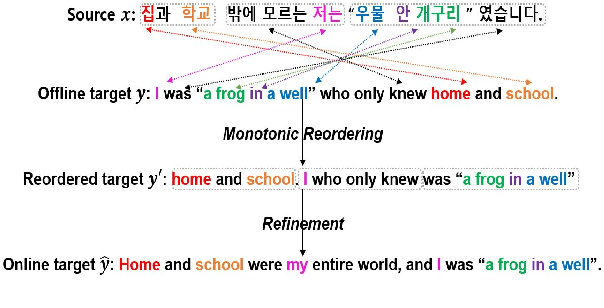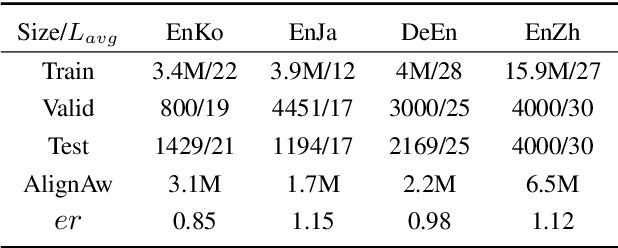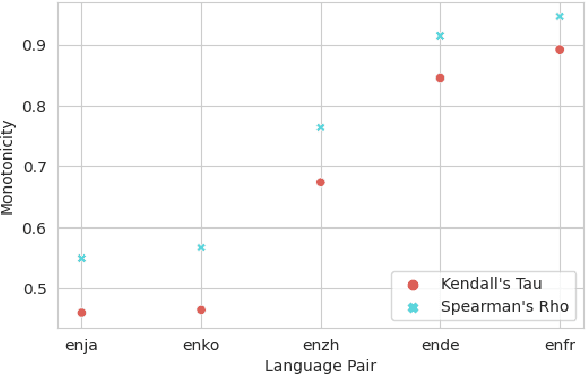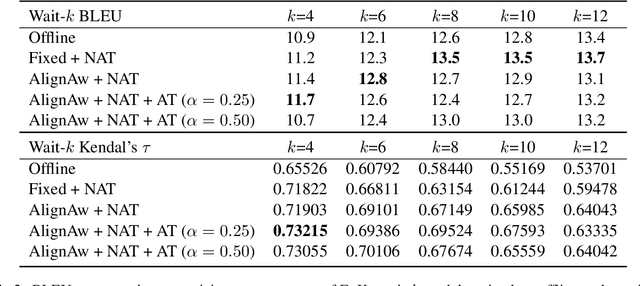Monotonic Simultaneous Translation with Chunk-wise Reordering and Refinement
Paper and Code
Oct 18, 2021



Recent work in simultaneous machine translation is often trained with conventional full sentence translation corpora, leading to either excessive latency or necessity to anticipate as-yet-unarrived words, when dealing with a language pair whose word orders significantly differ. This is unlike human simultaneous interpreters who produce largely monotonic translations at the expense of the grammaticality of a sentence being translated. In this paper, we thus propose an algorithm to reorder and refine the target side of a full sentence translation corpus, so that the words/phrases between the source and target sentences are aligned largely monotonically, using word alignment and non-autoregressive neural machine translation. We then train a widely used wait-k simultaneous translation model on this reordered-and-refined corpus. The proposed approach improves BLEU scores and resulting translations exhibit enhanced monotonicity with source sentences.
 Add to Chrome
Add to Chrome Add to Firefox
Add to Firefox Add to Edge
Add to Edge